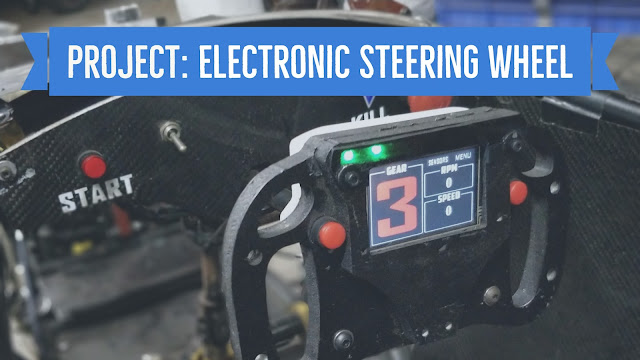Arduino 101: Tutorial #2 |Electrical Engineering Basics|
Hello everyone!
Welcome to the second tutorial of this series. In last tutorial we briefly introduced arduino, its applications and wrote a basic code to blink an LED. In this tutorial we're going to briefly go over some basic electrical engineering concepts that we may use while working with the arduino. This includes understanding voltage, current, resistance, potentiometers etc. that will help you make your own arduino circuits. So let's get started!
First off, we need to gobble up some basic definitions.
Basic Definitions
Electric Current
An electric current is a flow of electric charge. In electric circuits this charge is often carried by moving electrons in a wire. It can also be carried by ions in an electrolyte, or by both ions and electrons in some special cases.Voltage
In simple terms, it is the difference in electric potential energy between two points per unit electric charge.Resistance
The electrical resistance of an electrical conductor is a measure of the difficulty to pass an electric current through that conductor.Understanding the terms
Ok.! A lot of theory there, but what does those terms really mean? To understand this, let's consider an analogy. Look at the picture below.Consider the water pump in the image below. The water pump is pumping water up through a tube. The water in the tube then comes in contact with the water wheel. Because of the pressure that flowing water exerts on the water wheel, the wheel starts rotating. But this rotation of wheel does not comes for free. The wheel offers a resistance to the flow of water and in the process water loses its energy to the wheel. This loss of energy corresponds to a loss of water pressure downstream of the wheel. The low pressure water then enters in the pump again and gets converted into high pressure water upstream of the pump. And the cycle repeats again.
Voltage analogy
In the same way, the battery in electrical circuit is analogous to the water pump. Just as the water pump has a low pressure side and high pressure side. In the same way a battery has a low potential(voltage) and a high potential(voltage) side. This difference between two sides is known as potential difference or voltage difference.Current analogy
As in the case of our water circuit, the pressure difference provided by the water pump leads to the movement of water molecules and create "water flow". In the same way, in electrical circuits, the voltage difference provided by the battery leads to the movement of electrons in the conductor and create "current".Resistance analogy
Just like the water wheel(load) provides a resistance to the flow of water in our water circuit, and in process consumes the energy. In the same way, in our electrical circuit, fan(load) provides a resistance to the flow of current and in process consumes some energy.Note: Although it is ok to say "voltage" while describing a battery, the more scientifically accurate term is "voltage difference" or "potential difference". This is because there is nothing such as an absolute voltage. The voltage is always relative between two points. So rather than saying "This is a 9 volt battery", a scientifically literate person would say"This battery provides a potential difference of 9 volt". Though, as I said earlier, it is ok to say just "voltage" as it is always understandably read as voltage difference.
Ok. Now after understanding the very basic of the terms, we're now ready to embrace the very foundation of electrical engineering, and that is the Ohm's Law.
Ohm's Law
Ohm's law states that the current through a conductor between two points is directly proportional to the voltage across the two points. Introducing the constant of proportionality, the resistance, one arrives at the usual mathematical equation that describes this relationship.
Where,
I is the current through the conductor in units of amperes,
V is the voltage measured across the conductor in units of volts,
R is the resistance of the conductor in units of ohms.
More on Basics:
We can literally continue this lecture describing hundreds of more basic electrical engineering concepts, but I think there are people who have done this already in a much better way than I can probably do. Hence, if you want to study the basic concepts in much greater depth, here I leave you with the links below.
If you already understand these concepts, you can move on to the next tutorial, where we will talk about analog and digital signals in detail.
I hope you enjoyed the tutorial. If you have any suggestions/complaints or questions feel free to comment below. :)






thanks for the information , very informative and qualitative content , if looking for more information related to Electrical Engineering Visit:Electrical Engineering
ReplyDelete